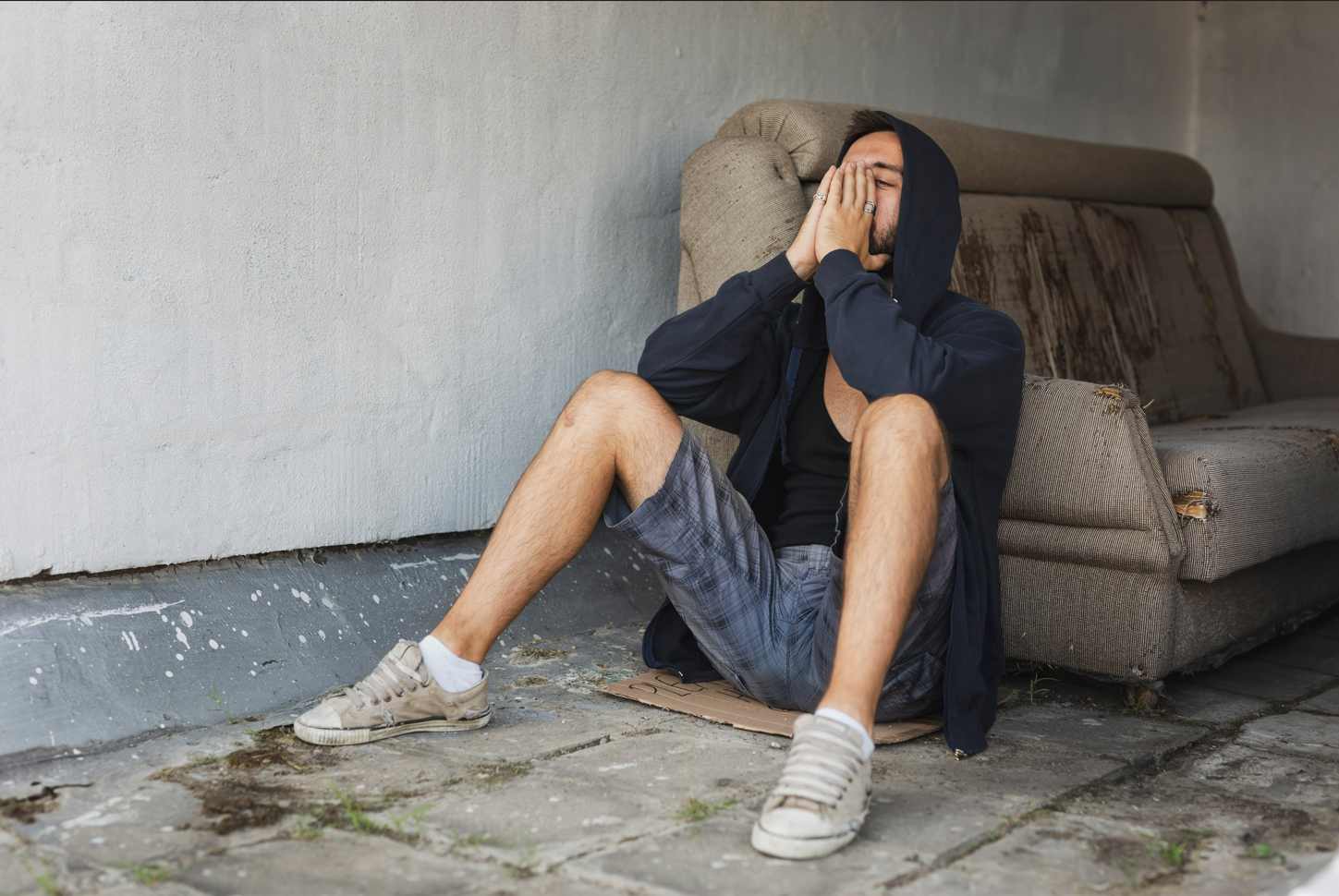Individuals with depression suffer from a low mood, poor sleep, difficulty concentrating, and a loss of pleasure. These and other depressive symptoms disrupt the patient’s daily functioning, relationships, and important activities, such as going to school and work. Though depression is a common and treatable condition, many find it difficult to seek help. So why do people get depressed these days, and why now?
Current rates of depression are affected by many factors. While the stigma around depression has decreased, many other factors have begun to contribute to higher rates of depression. It is therefore a complex array of competing variables that is ultimately shaping the prevalence of depression.
Read on to learn about unique personal factors that may explain why people go into depression. Then review the impact loss and change can have on an individual’s well-being. Finally, take a closer look at how environmental factors may lead to a greater chance of depression.

Every individual has their own, unique personal factors impacting their psychological well-being and physical health. Each factor can significantly change the bigger picture of depression risk.
Perinatal depression refers to depression occurring during pregnancy and in the months following birth, known as postpartum depression. Symptoms include persistently low mood and fatigue, emotional detachment, and a sense of emptiness that interferes with daily functioning and caring for the baby.
So why are more people depressed during and after pregnancy now? For starters, individuals are more aware of the signs of pregnancy-related depression, making it easier to recognize. However, several other factors have led to a significant rise in perinatal depression.
Impact of the COVID-19 Pandemic—One study reported that postpartum depression rates nearly tripled during the COVIE-19 pandemic due to reduced access to prenatal care and lower social support. And because the study included mostly Caucasian individuals, those from more diverse populations likely experienced even higher rates.
Health Conditions—More individuals are entering pregnancy with preexisting physical and mental health conditions, such as anxiety, major depression, type 2 diabetes, and obesity. All of these conditions have led to an increase in the risk of postpartum depression in recent years.
Health Disparities—Health disparities, which are preventable inequalities in health outcomes and healthcare access, have been steadily increasing for at least two decades. Discrimination due to race, ethnic background, and income level can lead to greater distress during pregnancy, resulting in poorer access to paid maternity leave and adequate health care services.
—One study reported that postpartum depression rates nearly tripled during the COVID-19 pandemic due to reduced access to prenatal care and lower social support. And because the study included mostly Caucasian individuals, those from more diverse populations likely experienced even higher rates.
Change and transition are normal aspects of life that can be at once exciting and distressing. Some current trends make large changes more likely, increasing the odds that distress may persist.
Research has connected large or sudden life changes with an increase in stress and anxiety, creating a state of imbalance that may become depression. And significant change can lead to ongoing distress, even if the change is perceived to be beneficial.
More Frequent Job Changes—Individuals are more likely to change jobs now, with 57% believing job changes can be beneficial in 2014, increasing to 64% in 2018. But many have also faced historic levels of job loss since 2020 due to the pandemic. No matter the reason, more individuals are contending with the adjustments that come with job changes and the distress that can follow.
More Weather Disasters—Weather disasters can also lead to major life changes, and with a five-fold increase in recorded weather disasters over the last few decades, more individuals are likely to encounter weather-related destruction in their communities. The death toll from these events has decreased over time but more damage has occurred, leaving some individuals traumatized. Some are forced to relocate and others endure the challenges of repair and restoration.
Changes Due to COVID-19—Once again the pandemic’s ramifications have created a destabilizing effect. Specifically, rapid adjustment to the COVID-19 pandemic in early 2020 resulted in the world’s population scrambling to adjust to dramatic changes to their sleep schedule, freedom of movement, availability of basic goods, and inability to regularly see their loved ones. Stress increased on a global scale as individuals found themselves isolated and becoming less physically active. While these changes were intended to improve safety, the scale of adjustment was emotionally taxing, and contributed to elevated depression rates.

Depression can be associated with chronic or severe health conditions for two primary reasons. First, accepting and adapting to a life-changing health condition can be emotionally difficult. Second, the biological mechanisms of some medical conditions can directly trigger depressive symptoms, such as the brain changes that occur in Parkinson’s disease and stroke.
One study examined the prevalence of several chronic diseases over a recent ten-year period, including heart conditions, diabetes, cancer, and hypertension. The results revealed elevated rates for nearly every health condition, as well as increased healthcare utilization and prescriptions. While this study focused on the population of only one country, these concerning trends mirror health issues found in other countries as well.
Various stressors in an individual’s environment can strongly impact their well-being, potentially elevating their risk for depression, with several current factors playing a significant role.
As mentioned earlier, in 2020, COVID-19 became a significant chronic stressor for individuals worldwide. Reaching across geographic, socioeconomic, and professional settings, the pandemic caused a multitude of environments to become potentially life-threatening leaving little doubt as to why so many people were depressed throughout the year.
In the United States alone, one study stated that reported depressive symptoms in adults increased three-fold in 2020 to 27.8%, rising more in 2021 to 32.8%. While the presence of depressive symptoms does not necessarily indicate a full-blown disorder, it does increase the odds of individuals developing it. Additionally, unmarried individuals have now been found to experience multiple stressors stemming from the pandemic, with those from a in part due to lower household income becoming most vulnerable.
As the world modernizes, more individuals have adopted a sedentary lifestyle, resulting in less time spent outdoors, less physical activity, poorer diets, and more isolation. These are all risk factors for depression, as well as for poorer heart health, type 2 diabetes, obesity, and other health conditions.
The United States, along with several other developed western countries, currently have some of the lowest rates of physical activity among adults worldwide. Over 80% of jobs in the United States workforce are sedentary, resulting in individuals sitting for the majority of their day. With easy access to media, individuals also spend more time watching television or videos on devices than ever before.
Excessive social media use for teens and young adults is related to worse overall mental health outcomes, especially depression. This effect was amplified during the first part of the COVID-19 pandemic, when a high volume of disturbing news flooded social media outlets every day. However, recent research shows that rather than causing depression, individuals who are already prone to depression may be more vulnerable to the negative impacts of excessive social media use. And with more use comes increased exposure to concerning news from around the world.
It is challenging to discern whether the world is actually more troubled than in years past or if it is simply easier to see bad news. Regardless, the COVID-19 pandemic, racial tensions in the United States, and international conflicts are difficult to ignore.
“Doomscrolling,” a new term referring to continuously scanning media for more and more negative news stories, has recently become more widespread. Doomscrolling can lead to hours of reading through one’s news feed, causing them to develop feelings of despair, a mindset that one cannot improve a bad situation no matter how much they try, and eventually, an increased risk of depression.
There is no single answer for why more people are depressed now. Personal factors and environmental influences play a part, and some individuals carry a higher risk than others. By understanding these risks and finding support when stressors emerge, individuals can minimize their risk of developing depression.